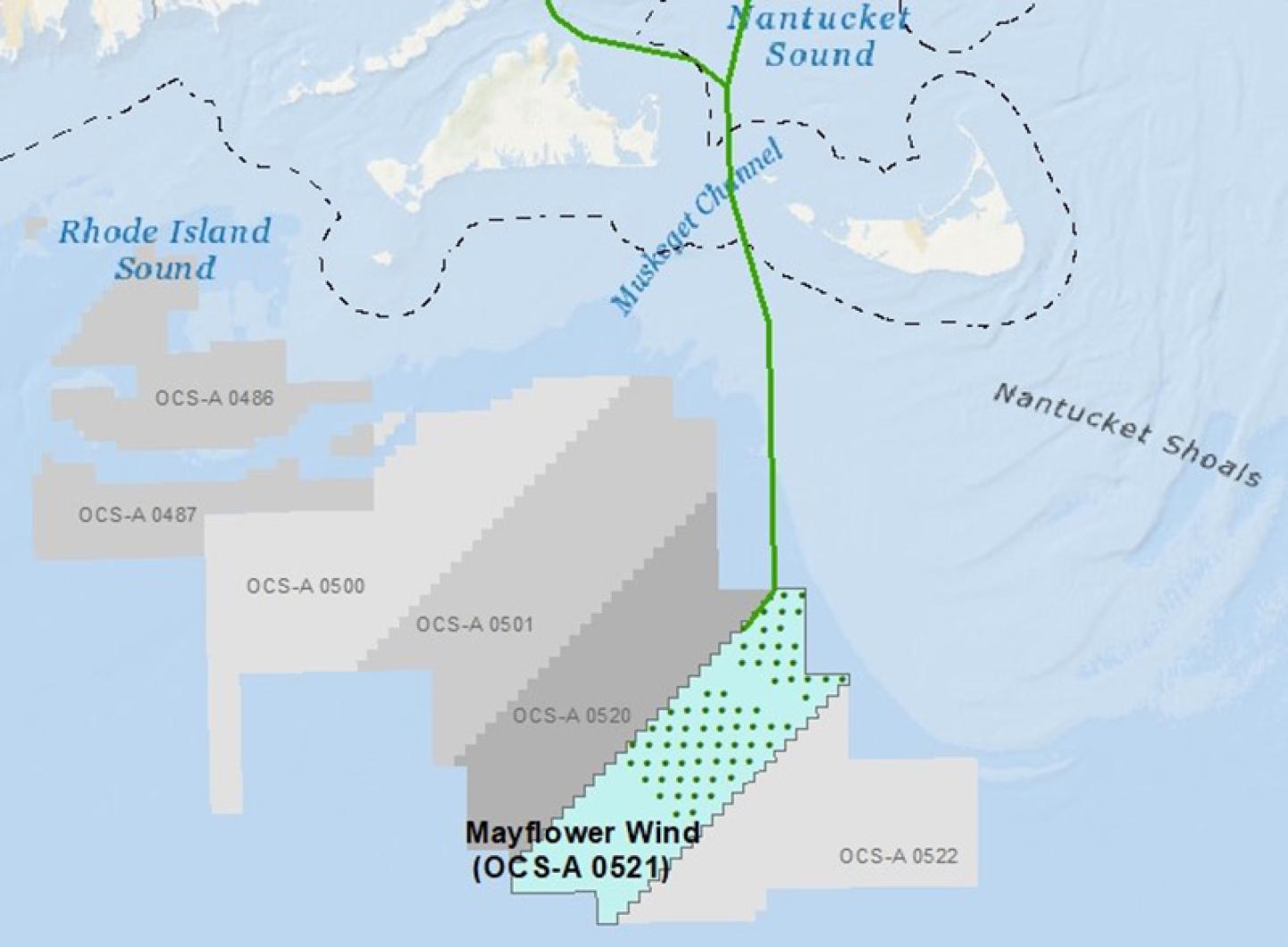Three offshore wind developers, including Vineyard Wind, have submitted bids to build the state’s second offshore wind farm — even as the first one remains mired in permitting issues.
The companies, Mayflower Wind, Bay State Wind and Vineyard Wind, were authorized to submit confidential bids to the state Department of Energy Resources on August 23, with public versions of the bids due on August 30. The bids were released to the public in early September.
Vineyard Wind won the right to build the state’s first offshore wind farm 14 miles south of Martha’s Vineyard in 2017, beating out Bay State Wind and Deepwater Wind (the latter was responsible for the Block Island wind farm).
Soon after, the federal government auctioned off three other wind lease areas in the waters just south of the Vineyard. Those auctions were completed in 2018, with each area going for approximately $135 million to Vineyard Wind, Mayflower Wind and the Norwegian company Equinor. There are now five companies with federal offshore wind leases in Massachusetts.
This most recent request for proposals from the state would allow the chosen bidder, either Mayflower, Bay State or Vineyard Wind, to negotiate an energy pricing contract with the DOER and public utility companies. Due to the high price of construction, it is necessary for the companies to sign a utility contract before turbines are installed.
The race to build offshore wind in Massachusetts began in earnest in 2016 when Gov. Charlie Baker signed energy legislation allowing for the procurement of approximately 1,600 megawatts of offshore wind energy generation by the state. Vineyard Wind’s first project accounts for 800 of those megawatts; the winner of the most recent bidding process will account for the rest.
Each bidder was required to submit proposals for a 400-megawatt wind farm in their respective lease area, with the state charging the companies a $500,000 non-refundable bid fee for each pricing proposal. The companies submitted a combined nine different pricing proposals, six of them representing 800-megawatt farms, earning the state nearly $5 million. Because details in the public versions of the bids are redacted, the offered pricing options are not yet available.
The Mayflower Wind proposal appears to include an offshore cable that would run east of Martha’s Vineyard, connecting the turbines to the mainland at Cape Cod. Language in the proposal also makes the claim that all three of the 800-megawatt proposals “would provide the commonwealth with the lowest price yet for U.S. offshore wind.”
Bay State’s lease area is at the far northwest end of the federal lease region, making it unclear how it would connect to the mainland. Vineyard Wind did not include a map with their proposal, although its lease area is adjacent to Mayflower’s. Neither company made pricing claims in the public versions of their bids.
Over the next two months, the DOER and utility companies will analyze the bids. Winning projects are due to be selected for negotiation on Nov. 8. Contracts will then be negotiated and executed by Dec. 13, with long-term contracts going to the state Department of Public Utilities for final approval in late January.
All three companies are joint, 50-50 energy partnerships between renewable investment ventures and energy companies. Vineyard Wind’s partnership is between Avangrid Renewables and the Danish company Copenhagen Infrastructure Projects. Bay State Wind combines the Massachusetts-based energy company Eversource and another Danish company called Orsted. Mayflower Wind is a partnership between Royal Dutch Shell and EDP renewables.
Vineyard Wind was set to move forward with phase one of its proposed $2.8 billion, 84-turbine project earlier this year, but has since hit permitting snags on multiple fronts that will delay construction on the project until at least early 2020.
In July, the Edgartown conservation commission denied the project after hearing concerns from local fishermen. The state Department of Environmental Protection has since issued a superseding order of conditions for the but the concom will appeal, possibly pointing to longer delays.
Meanwhile, the federal government has delayed Vineyard Wind’s environmental impact statement indefinitely on the grounds that the government now plans to examine the cumulative impacts of all offshore wind energy projects along the Eastern seaboard. The EIS is a necessary federal permitting step for offshore wind projects.
Katie Gronendyke, a spokesman for the state office energy and environmental affairs, said in a written statement that wind energy projects are an important facet of the Baker administration’s push toward reducing greenhouse emissions.
“These proposals will be carefully reviewed to ensure that the energy procured is in the best interest of the commonwealth, provides economic development, and is ultimately cost-effective for ratepayers across the state,” the statement said.





Comments (9)
Comments
Comment policy »